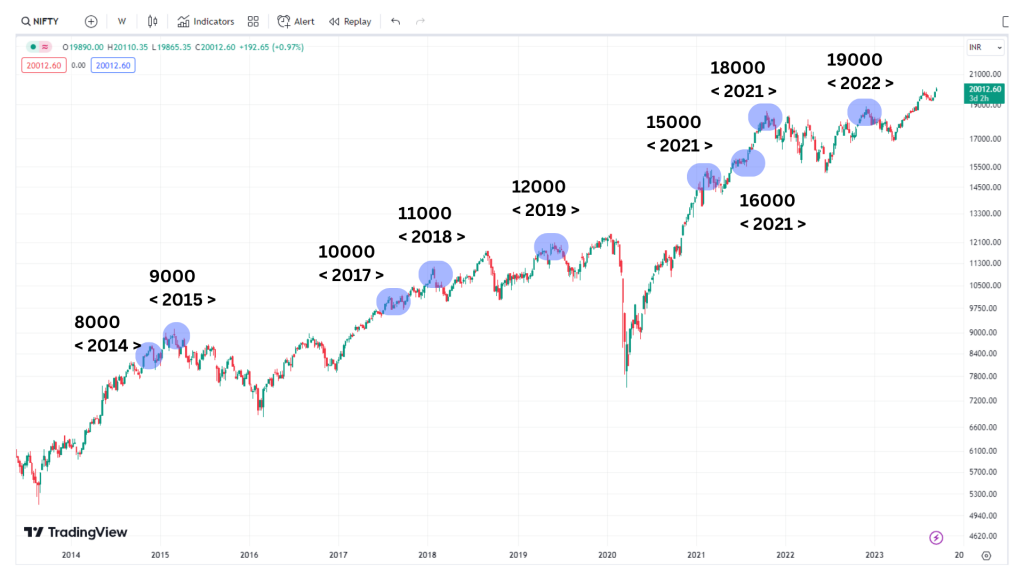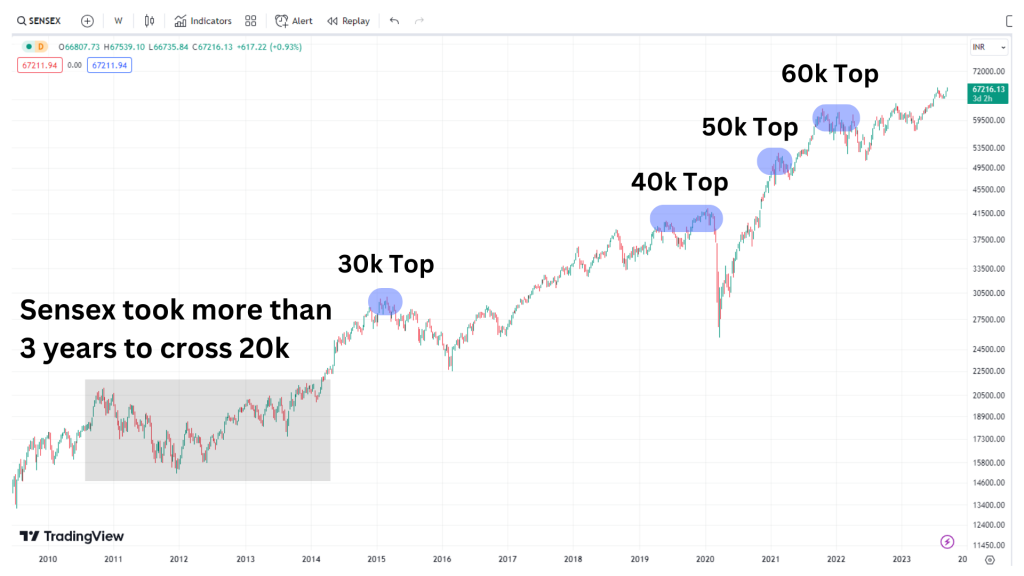Have you ever wondered why the stock market seems to fluctuate significantly when it reaches round numbers? The market’s behaviour at these milestone figures is not a coincidence; it has a psychological explanation. In this article, we’ll explore the phenomenon of round numbers in the stock market and its impact on investor behaviour.
The Psychology of Round Numbers
When the market hits a round number like 10,000 or 20,000, it captures the attention of both active traders and casual investors who may not be actively monitoring the market. These individuals often use these round numbers as thresholds to make decisions about their investments. For example, some may decide to enter the market if a major index like Nifty reaches 15,000, or they may choose to sell off a portion of their stocks if the Sensex hits 50,000.
These round numbers act as magnets for sellers, as they signify significant milestones. If the market has the potential to move higher, it needs to first absorb the selling pressure at these levels and establish equilibrium before continued upward movement.
If we analyse market behaviour over the past decade, we observe distinct patterns at round numbers. Let’s take a closer look at some examples:

– In 2014, when the market hovered around 8,000, it experienced fluctuations before eventually surpassing this round number.
– Similarly, in 2015, the market struggled near 9,000 before breaking through.
– The same pattern repeated in 2017, as the market wobbled around 10,000 before gaining momentum.
– We can continue this analysis with more examples: 11,000, 12,000, 15,000, 16,000, 18,000, and most recently, 19,000 before reaching 20,000.
At each of these round numbers, we observed selling pressure and a period of reestablishing equilibrium before the market moved higher. These patterns are not coincidental but rather a result of the round number syndrome.
The Case of Sensex

The Sensex, one of the primary market indices in India, has its own share of round number syndrome. For instance, when the Sensex reached 30,000, it experienced significant market activity. The same phenomenon occurred at multiples of 10,000: 40,000 and 50,000. These round numbers often become key points of congestion, with the market struggling to break through for extended periods.
However, it’s important to note that the round number syndrome is a short-term phenomenon. Once the selling pressure is absorbed, the market resumes its movement based on other factors and progresses independently from these milestones.
Understanding the market’s behavior at round numbers can provide investors with valuable insights. These round numbers act as psychological triggers for investors, driving their decision-making processes. Recognizing this phenomenon allows investors to make more informed choices and understand the short-term fluctuations that occur at these milestones.
Download the WeekendInvesting App

If you have any questions for us. please write to us on support@weekendinvesting.com. You can also get on a 1-1 meeting with us should you need more clarity about the strategies or processes.









